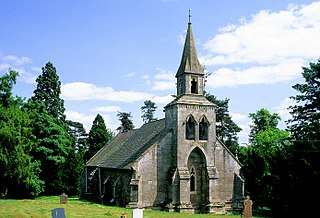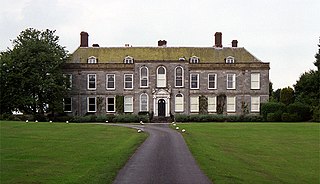
Jacob Astley, 1st Baron Astley of Reading was a Royalist commander in the English Civil War and most famously served during the Battle of Newbury and Naseby. He also was involved in the Dutch Revolt and the Thirty Years War. After the second phase of the Civil War, he was imprisoned and then retired in Maidstone. He died shortly after in 1652.

Bridgnorth is a town and civil parish in Shropshire, England. The River Severn splits it into High Town and Low Town, the upper town on the right bank and the lower on the left bank of the River Severn. The population at the 2011 Census was 12,079.

Astley Abbotts is a village and civil parish in Shropshire, England, located immediately north of Bridgnorth, and straddling the B4373 Bridgnorth to Broseley road. According to the 2001 census the parish had a population of 396.

Sir Edward Acton, 1st Baronet was an English MP for Bridgnorth and High Sheriff of Shropshire, who supported Royalist cause during the English Civil War.

The Battle of Stow-on-the-Wold took place during the First English Civil War. It was a Parliamentarian victory by detachments of the New Model Army over the last Royalist field army.
The following units and commanders fought in the Battle of Naseby during the First English Civil War.

Sir William Vaughan was a cavalry officer in the armies of Charles I of England. Initially serving in Ireland during the Confederate Wars, the outbreak of the First English Civil War led to him being sent to England in 1644, at the head of an Anglo-Irish cavalry regiment, to reinforce the Royalist army.

Colonel William Careless was a Royalist officer of the English Civil War. It has been estimated in various written sources that he was born c. 1620, however, it is more likely that he was born c. 1610. He was the second son of John Careless of Broom Hall, Brewood, Staffordshire, and his wife Ellen Fluit. He is chiefly remembered as the companion of King Charles II when the fugitive monarch hid in the Royal Oak following his defeat at the Battle of Worcester. His surname was changed to Carlos, the Spanish for Charles, by order of Charles II. He died in 1689.

Sir Thomas Whitmore, 1st Baronet was an English politician who sat in the House of Commons of England between 1640 and 1644. He supported the Royalist side in the English Civil War.

Richard Herbert, 2nd Baron Herbert of Chirbury was an Anglo-Welsh Member of Parliament, a Royalist who fought with the rank of colonel in the English Civil War, and a peer whose membership of the House of Lords was curtailed by its abolition in 1649.

Goldstone is a small hamlet in eastern Shropshire, England, in the civil parish of Cheswardine. It lies in an isolated rural area north of Hinstock and Ellerton, around 5 miles (8 km) south of the nearest town, Market Drayton.

The Battle of Burton Bridge was fought between Royalist and Parliamentarian forces at Burton upon Trent on 4 July 1643 during the First English Civil War. By the time of the battle, the town, which had at various times been held by both sides, was garrisoned by a Parliamentarian unit under the command of Captain Thomas Sanders and the town's military governor, Colonel Richard Houghton. The key river crossing at Burton was desired by Queen Henrietta Maria, who was proceeding southwards from Yorkshire with a convoy of supplies destined for King Charles I at Oxford. The Royalists, led by Colonel Thomas Tyldesley, launched a cavalry charge across the bridge which succeeded in defeating the Parliamentarians and capturing most of their officers, including Sanders and Houghton. The Queen's convoy proceeded on its way south to Oxford, with Tyldesley receiving a knighthood and a promotion in recognition of his victory. Burton changed hands several more times during the course of the war, before finally coming under Parliamentarian control in 1646.

This is a timeline for the English Civil War in Shropshire.
Colonel Francis Billingsley (1595–1646) was a Royalist officer in the English Civil War. Placed in charge of the defences of Bridgnorth in Shropshire, he was killed in the churchyard of St Leonard's when the town was stormed by Parliamentarian troops on 31 March 1646.
Sir Thomas Billingsley was a noted English horseman in the seventeenth century connected with the families of the Earls of Dorset, Thanet and Prince Rupert of the Rhine.

Sir Thomas Wolryche, 1st Baronet was an English landowner and politician who sat in the House of Commons for Wenlock between 1621 and 1625. He fought in the Royalist army in the English Civil War, serving as military governor of Bridgnorth.

Sir Francis Ottley was an English Royalist politician and soldier who played an important part in the English Civil War in Shropshire. He was military governor of Shrewsbury during the early years of the war and later served as the Royalist High Sheriff of the county and helped negotiate the surrender of Bridgnorth. His final years were spent in a prolonged and complex struggle to free his estates from sequestration.
Church plaques Bridgnorth & Astley Abbots. Church record's St Calixtus. Manorial Records Shropshire Archives. Manorial Grants to Irish Officers. Canterbury wills. State records 1306 - 7. Kew.














